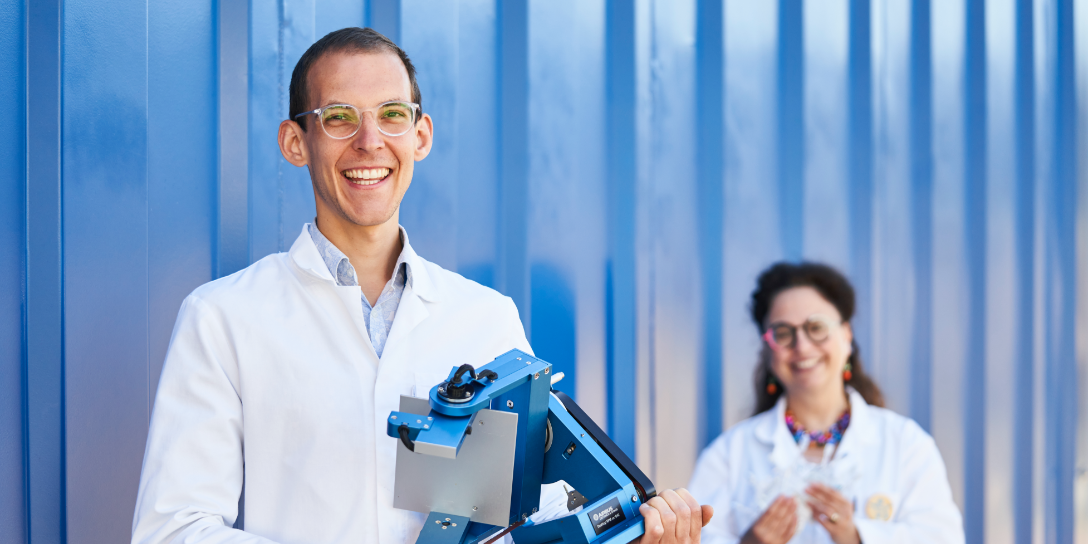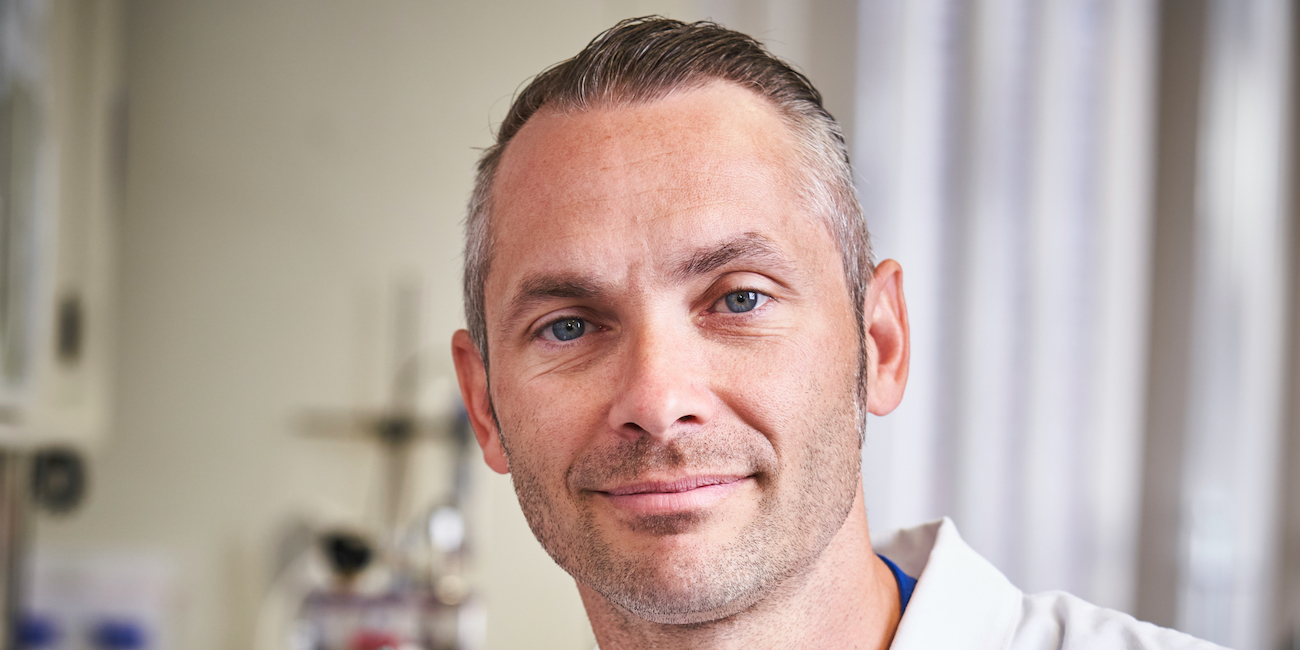2040
Space
How to prepare for increasingly long space voyages
SCK CEN sends bacteria and rotifers into space

Last year, the International Space Station had special guests on board: tiny organisms measuring 1 micrometre to 1 millimetre in size. They are invisible to the naked eye. However, despite their small size, they might provide an answer to many different problems in space. Will they open up a gateway to Mars in 2040?
Millions of kilometres separate us from the planet Mars. Yet it is not the material distance that is blocking the way to this coveted red planet. The obstacles facing a long manned space voyage are factors, such as weightlessness, cosmic rays and a limited supply of water and food. Among other things, prolonged weightlessness and cosmic radiation affect vision, while also making the bones fragile and increasing the risk of cancer. In addition, a voyage to Mars and back, which takes 2.5 - 3 years, would be impossible without an independent water and food supply. It should also be remembered that you would have to carry approx. 25 tonnes of food and drink per passenger and today’s space vessels are not equipped do this. Every kilo transported is worth its weight in gold, which means that quantities have to be limited.
Fortunately, space exploration does not stand still for one second. Scientists are working on solutions and technologies aimed at overcoming these obstacles. After all, the mysteries that we can unravel on Mars and other planets have incalculable value, including for life on earth. They boost our scientific knowledge, which leads to crucial innovations. SCK CEN also supports these innovative studies. In 2019, it conducted two experiments in space with (inter) national partners: one with bacteria and the other with tiny rotifers.

We have gained an overview of the possibilities of obtaining nutrients by mining planetary surfaces. We can use these nutrients as raw materials to produce food in space.
Bacteria as a “raw material” for agriculture on the moon
Before setting foot on Mars, the NASA space agency plans to send people to the moon in 2024, where it plans to establish a permanent base. At a distance of approx. 385,000 kilometres, our nearest neighbour in space could act as a springboard to Mars. “Inhabitants of the future Moon Village, such as astronauts, will not be able to return to Earth for supplies for a certain period. They will have to produce their own water, food and oxygen on the spot”, explains Natalie Leys, microbiologist at SCK CEN. But how? Will it be possible to sow, plant and harvest crops on the moon?
In order to answer this question, scientists from SCK CEN, the Deutsches Zentrum für Luft- und Raumfahrt and the University of Edinburgh sent bacteria and basaltic rocks into space last year. “Basalt is a volcanic rock, which is also found on the moon”, explains SCK CEN scientist Rob Van Houdt who is coordinating the project. “We were checking whether bacteria attaches itself to this type of lunar rock and whether it develops. Are they able to release the necessary nutritive elements (nutrients) from the lunar rock under the influence of microgravity and space radiation, in order to transform the rock into a more “fertile” soil? We could then use these nutrients as raw materials to produce food. And this would make agriculture possible in space.”

Less dependent on the earth’s resources
The partners collected three types of bacteria from the rock: Sphingomonas desiccabilis, Cupriavidus metallidurans and Bacillus subtilis. Van Houdt: “In order to make the soil fertile, we need to know which bacterium is the most appropriate. Which bacterium would be the best raw material? The first bacterium released more nutrients, while the second produced the same quantity and the third produced less.”
It is too early to dig up the surface of the moon and plant vegetables, but the results point towards a better understanding of biomining. In other words, we have gained an overview of the possibilities of obtaining nutrients by mining planetary surfaces. This makes it possible for us to improve these processes and, ultimately, become less dependent on the earth’s precious raw materials”, adds Van Houdt.
Rotifers – suited to life in space
In the autumn, six months after the experimental flight with bacteria, UNamur and SCK CEN sent a cargo of rotifers from the Kennedy Space Center in Florida to the ISS. The rotifers survive in an airless space and are more resistant to high doses of radiation and even dehydration. This is remarkable, as their cell structure resembles that of human beings”, explains Sarah Baatout, radiobiologist at the SCK CEN. By means of this space experiment, the research partners wish to identify the underlying causes. The advantage is that “this information can play a part in developing ways of increasing astronauts’ resistance to radiation during future space voyages.”
The rotifers have been circling the Earth for two weeks, which meant that they were exposed to the effects of space. After a successful flight, the scientists examined the rotifers in terms of reproduction, gene expression and genome structure. According to Boris Hespeels, biologist at UNamur, “genetic expression tells the cells that they are producing proteins. This is necessary, for example, in order to repair damage caused to the DNA. By studying this gene expression in detail, we can see which processes take place in the rotifers and therefore which mechanisms protect against the extreme space environment. We then checked their genomes to determine whether the damaged DNA had been correctly repaired. A badly repaired genome can lead to infertility and anomalies in the progeny even after death.”
This information can play a part in developing ways of increasing astronauts’ resistance to radiation during future space voyages.
Focusing on the progeny
UNamur and SCK CEN have also kept rotifers on Earth and treated them in the same way. Karine Van Doninck, biologist at UNamur: “By comparing the status of the rotifers that travelled into space with that of rotifers on Earth, we can study the impact of extreme space conditions on the exposed rotifers. How does their progeny behave, for example? Because they clone themselves and therefore reproduce asexually, they also copy any errors that appear when the DNA is repaired.”
The rotifers were able to repair their DNA without any problems under the influence of cosmic rays. Subsequent research will have to show how they manage to do this. These discoveries pave the way for more extensive space exploration, but this research will also be useful on Earth. Radiobiologist Bjorn Baselet from SCK CEN says that “our results may lead, for example, to measures aimed at a more effective protection for cancer patients or occupational workers who are exposed to the negative effects of radiation during their treatment.”

Without human intervention
Rotifers are microscopic (200 micrometres - 1 millimetre). They live in lakes and rivers, on mosses, damp soils, tree trunks, rocks and leaf debris. Some species, such as the bdelloid rotifer, reproduce asexually. In other words, the females clone themselves. The rotifer owes its name to the lashes that form a crown around its mouth and can rotate at lightning speed like a wheel. As a result, water flows into its mouth, with which the rotifer filters its food. UNamur and SCK CEN have sent the rotifer Bdelloidea Adineta vaga into space. A new flight is planned for autumn 2020 and 2023.
Ook op aarde zal het onderzoek zijn nut bewijzen. Denk bijvoorbeeld aan de bescherming van
kankerpatiënten tegen negatieve effecten van blootstelling aan straling tijdens hun therapie.